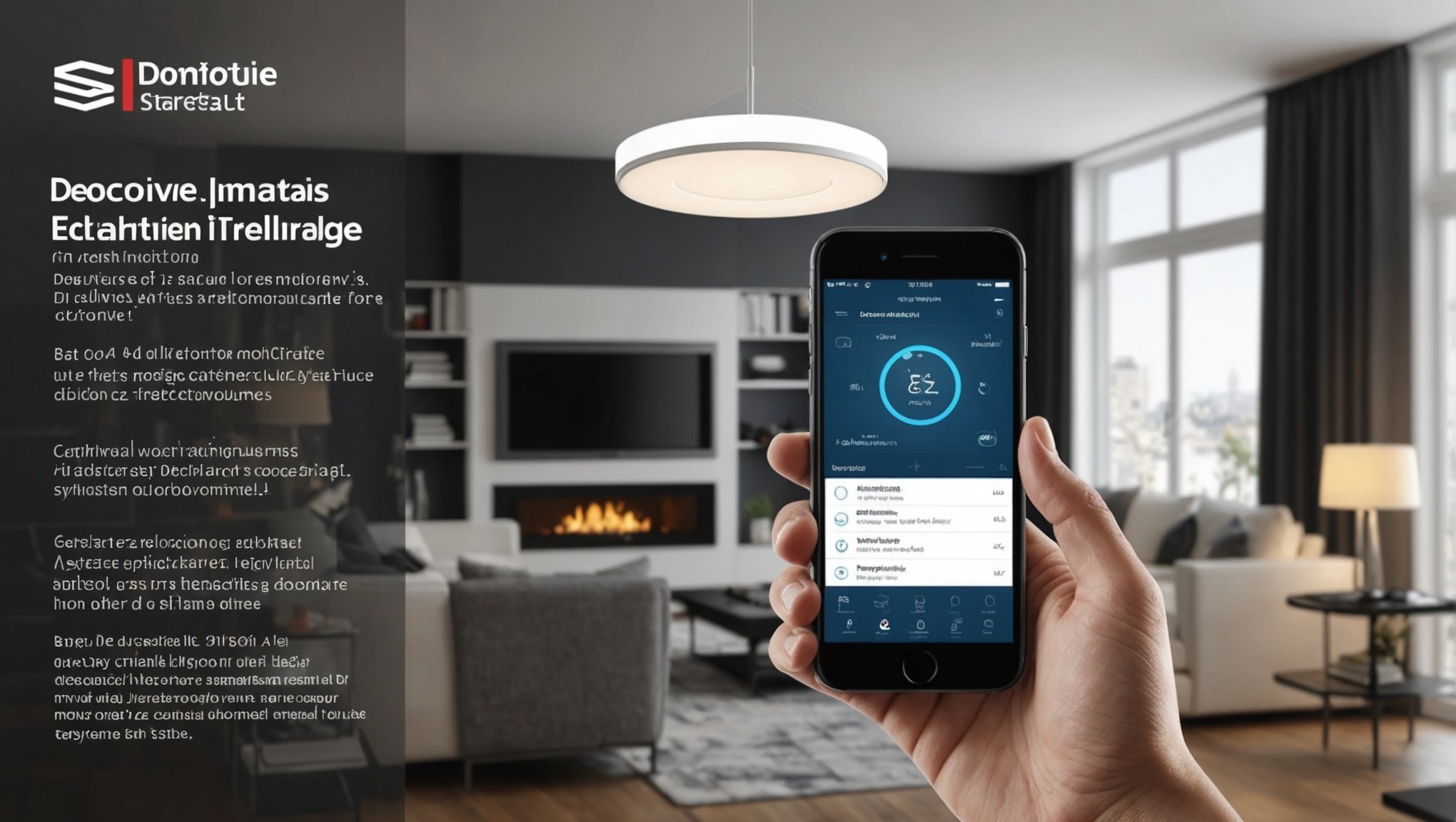Overview of Smart Lighting Solutions
Smart lighting is revolutionizing the way we illuminate our homes, providing an effortless entry into the realm of home automation. As a subset of smart home technology, it offers numerous advantages, such as energy efficiency and customizable ambiance that can enhance any living environment. By utilizing advanced technology, users can control the intensity, color, and even the timing of their lights through mobile apps or voice commands.
Popular smart lighting technologies include systems like Philips Hue, LIFX, and Wyze. These technologies support wireless connectivity, allowing seamless integration into existing smart home ecosystems. With functionalities like scheduling and dynamic color schemes, they deliver flexibility and creativity in design. Users can easily sync their lighting with other smart devices, ensuring a cohesive and responsive home environment.
Additional reading : Top Eco-Friendly Flooring Choices for Your Child”s Playroom: Safe and Stylish Solutions
Integrating smart lighting within a home automation system is not only a smart choice but an essential one. Leveraging smart lighting as part of a comprehensive automation strategy means greater control over energy consumption and enhanced security features. For instance, automated lighting can simulate occupancy while you’re away, deterring potential intruders. As technology advances, incorporating smart lighting becomes increasingly practical, catering to both convenience and peace of mind.
Top Smart Lighting Products
Explore a vibrant world of smart lighting that enhances your home’s ambience and efficiency. When it comes to the best smart light bulbs, Philips Hue and LIFX stand out with their seamless integration and wide color palettes. These bulbs can be easily controlled via your smartphone, bringing both convenience and cost-effectiveness. Additionally, smart bulbs often come with features like dimming options and scheduling, which aid in energy conservation.
In the same genre : Top Tranquil Plants to Transform Your Urban Terrace into a Serene Oasis
Transitioning from bulbs, smart light strips offer a different kind of versatility, primarily used in accent lighting and design. They are perfect for adding a creative touch to your living space. Brands like Govee and Philips Hue provide strips that can be adjusted for brightness and color, enabling personalised settings that match your mood or occasion. Strip lights enhance home aesthetics when used under cabinets or around entertainment systems for a sleek and modern look.
Lastly, smart lighting fixtures represent complete solutions for those looking to upgrade their entire home lighting system. Products such as chandelier-style smart fixtures provide both elegance and functionality. These advanced options often include voice control and customisable scenes, offering a fully automated lighting environment.
Compatibility with Home Automation Systems
When considering smart home integration, understanding the compatibility between smart lights and various home automation platforms is crucial. There are a variety of systems available, each with its unique requirements and protocols. Popular platforms include Amazon Alexa, Google Assistant, and Apple HomeKit. These systems function best when matched with compatible smart lighting options.
Understanding Protocol Differences
Smart home devices communicate through different protocols: Zigbee, Z-Wave, Wi-Fi, and Bluetooth. Each has its benefits and restrictions. For example:
- Zigbee: Highly efficient, offers wide range, suitable for dense smart home setups.
- Z-Wave: Known for its reliability and interference-free communication.
- Wi-Fi: Offers direct internet connection, simplifying setup but may affect bandwidth.
- Bluetooth: Best for close-range devices, but limited in distance.
Ensuring Seamless Integration
To achieve seamless integration between smart lighting and your automation system, ensure the hardware is compatible with your chosen protocol. Checking the manufacturer’s specifications regarding platform compatibility will lead to a more harmonious smart home environment. Adjust your network configuration to support multiple devices without traffic congestion for optimal performance. This will empower you to manage your home’s lighting efficiently and effortlessly.
Installation Tips and Best Practices
Setting up smart lighting products can seem daunting, but with a clear setup guide, the process can become surprisingly user-friendly. The following will provide a step-by-step guide to ensure a smooth installation.
Start by carefully choosing the location for your smart lighting. Consider areas with good Wi-Fi coverage for a seamless connection. Begin the installation by turning off the power to prevent any electrical mishaps. Once secure, remove your existing lighting fixture.
The next step is to connect your new smart lighting device. Make sure to follow the manufacturer’s instructions, typically included in the setup guide, or accessible online. Pay attention to wiring configurations as incorrect wiring can lead to challenges later on.
In case of installation challenges such as connectivity issues or improper pairing with devices, ensure your router’s firmware is up-to-date. Check whether the smart lighting is compatible with your home network specifications.
Proper setup involves personalizing the lighting configuration through a dedicated app. Adjusting brightness, colour, and scheduling can greatly enhance user experience. Ensuring that everyone in the household understands this user-friendly interface will contribute to a successful and satisfying installation.
User Reviews and Recommendations
Understanding customer feedback is crucial when choosing the right smart lighting option. Users often focus on reliability, ease of installation, and seamless integration with existing systems. These aspects contribute to the overall satisfaction reflected in product ratings. Commonly, users highlight the intuitive nature of smart lighting controls and the energy efficiency benefits. However, some users mention connectivity issues which can sometimes dampen the experience.
User experiences provide valuable insights into how various smart lights perform in real-life settings. Many users praise the customisability features, such as adjustable brightness and a broad colour spectrum, which cater to personal preferences and create tailored environments. This adaptability is a frequent topic in reviews and contributes to high product ratings.
When examining consumer satisfaction, it’s evident that high-performing smart lighting options boast excellent connectivity, energy savings, and user-friendly interfaces. This is particularly advantageous for those looking to enhance their home automation system.
Recommendations based on user feedback often suggest selecting smart lights that align with your home ecosystem, ensuring the chosen system is compatible with other smart devices. This not only enhances functionality but also maximises the overall efficiency and enjoyment of smart lighting.
Buying Guide for Smart Lighting
When considering the purchase of a smart lighting system, energy efficiency and cost are key factors. Smart lighting systems vary greatly in pricing, which can influence your decision significantly. Understanding the price ranges of these systems helps make an informed choice.
Price Ranges
Smart lighting options come at different prices, with basic smart bulbs starting at a reasonable cost for those on a budget. For more comprehensive systems, such as those with adjustable colour and brightness settings, prices are understandably higher. Ensure you know what features you need, so you’re not overspending on unnecessary functionalities.
Considerations for Energy Efficiency
One major benefit of smart lighting is its energy efficiency. Opting for LED-based systems not only reduces electricity usage but also extends bulb lifespan, ultimately saving you money over time. When selecting your system, look for those with energy-saving certifications to ensure you’re making an environmentally friendly choice.
Importance of Aesthetic Appeal
Finally, consider how the lighting fits into your home’s aesthetic. Whether you prefer contemporary designs or more traditional styles, smart lighting options are available to suit any decor, giving you flexibility in harmonizing functionality and style.
Visual Appeal of Smart Lighting
Smart lighting offers an exciting way to transform the aesthetics of your home, allowing you to create a desired ambiance effortlessly. By incorporating clever design options, you can enhance the visual appeal of any room. With smart lighting, every room can tell its own story.
Imagine a living room where warm hues create a cozy environment, or a kitchen that comes alive with vibrant, fresh tones. These effects are made possible with the various design options available in smart lighting, such as adjustable brightness levels and a spectrum of colours. These features allow you to fine-tune the atmosphere according to your preferences.
For a unique touch, consider using creative lighting designs specific to each room’s function and style. In a reading nook, layered lighting can provide comfort without strain, while in the dining room, statement lights can add sophistication.
When selecting smart lighting, think about how the fixture looks both on and off, ensuring it complements the home’s style. Remember, smart lighting doesn’t just illuminate a space—it effortlessly frames and highlights your unique sense of style and enhances the aesthetics of your home.
Additional Resources and Purchase Links
When it comes to integrating smart lighting into your home, having access to the right resources is crucial. Whether it’s understanding how these technologies work or knowing which products to invest in, reliable information is your best friend. Below is a curated list of resources that can help guide your decisions:
Product Links and Information
If you’re looking to buy smart lighting products, it’s worth exploring product links from trusted retailers. These will often provide you with necessary details such as specifications, compatibility, and customer reviews. Ensure that your chosen products meet your home automation requirements and are compatible with your existing ecosystem for a seamless experience.
User Guides and Manuals
For those who need more detailed instructions, user guides and manuals are invaluable. These documents usually cover installation steps, troubleshooting tips, and usage instructions to help you get the most out of your smart lighting solutions. Many manufacturers offer digital versions available on their websites.
Having easy access to these resources guarantees you are well-equipped to make informed purchase decisions. From detailed product information to comprehensive user guides, these tools ensure your transition to smart lighting is smooth and satisfying.











